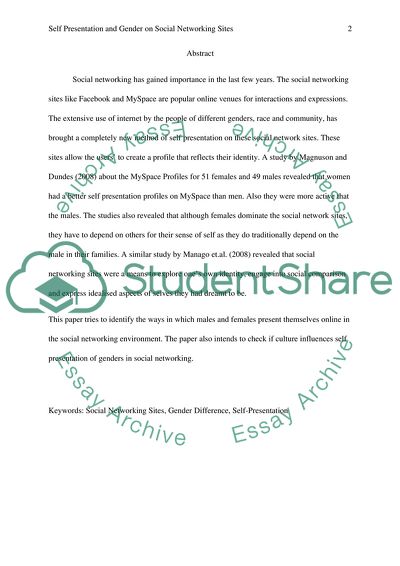Cite this document
(Self-Presentation and Gender on Social Networking Sites Literature review Example | Topics and Well Written Essays - 1750 words, n.d.)
Self-Presentation and Gender on Social Networking Sites Literature review Example | Topics and Well Written Essays - 1750 words. https://studentshare.org/gender-sexual-studies/1773431-communication-issue-paper
Self-Presentation and Gender on Social Networking Sites Literature review Example | Topics and Well Written Essays - 1750 words. https://studentshare.org/gender-sexual-studies/1773431-communication-issue-paper
(Self-Presentation and Gender on Social Networking Sites Literature Review Example | Topics and Well Written Essays - 1750 Words)
Self-Presentation and Gender on Social Networking Sites Literature Review Example | Topics and Well Written Essays - 1750 Words. https://studentshare.org/gender-sexual-studies/1773431-communication-issue-paper.
Self-Presentation and Gender on Social Networking Sites Literature Review Example | Topics and Well Written Essays - 1750 Words. https://studentshare.org/gender-sexual-studies/1773431-communication-issue-paper.
“Self-Presentation and Gender on Social Networking Sites Literature Review Example | Topics and Well Written Essays - 1750 Words”. https://studentshare.org/gender-sexual-studies/1773431-communication-issue-paper.


